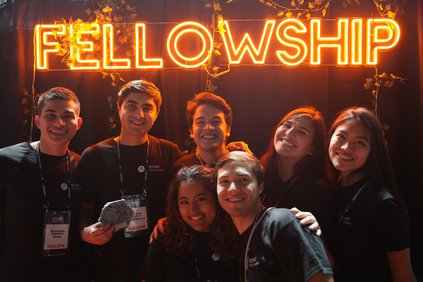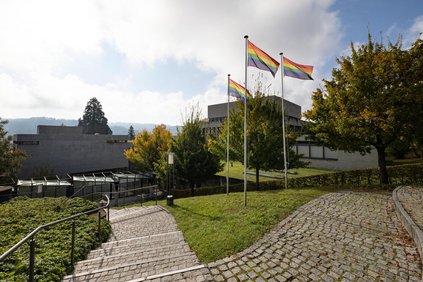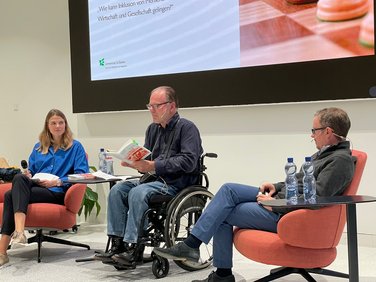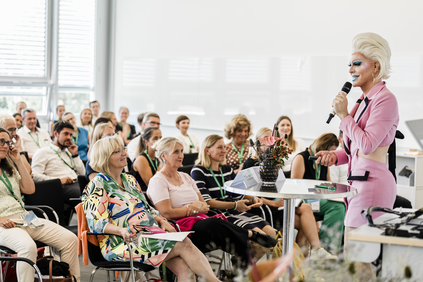Research - 14.09.2023 - 16:00
Gender Intelligence Report 2023: Sustainable Solutions for the Skills Shortage
The skills shortage is at an all-time high and threatens to worsen as Baby Boomers set to retire. According to calculations by the Gottlieb Duttweiler Institute (GDI), even with moderate immigration of 50,000 skilled professionals per year, up to 400,000 positions could remain vacant by 2030. The new "Gender Intelligence Report" by Advance and HSG highlights that gender equality can contribute to a diverse talent pool and a productive economy.

The skills shortage is at an all-time high. The new "Gender Intelligence Report" by Advance and HSG highlights that gender equality can contribute to a diverse talent pool and a productive economy.
With approximately 400,000 anonymized HR raw data from over 100 renowned Swiss companies, the Gender Intelligence Report annually compiles statistics on the development of gender diversity in Swiss business leadership. The 7th edition of the report reveals that progress is slow, especially at the foundational level where the groundwork for future leadership is laid. While the leaks in the female talent pipeline have somewhat reduced, the figures only show changes in the low single-digit percentage range. Positions with power and influence remain predominantly in male hands. The most significant loss of skilled female labour potential occurs in the age group between 30 and 40, when families are formed, and many women reduce their working hours.
Conservative values and rigid norms and structures in the business world are cited as one of the main reasons for slow progress. While the demands and needs of the job market have evolved rapidly, our societal structures still resemble those of the 1950s: men work full-time, and women reduce their workload once a family is formed. This, despite achieving educational parity, is increasingly burdening the Swiss economy and can be considered one of the consequences of the skills shortage.
Alignment of working hours would contribute to a sustainable talent supply
From an economic perspective, aligning the working hours of men and women in Switzerland would make sense, especially since more women now hold tertiary degrees than men. The part-time gender gap in Switzerland is one of the largest among OECD countries. This has far-reaching consequences, not only for individuals but also for the economy and ultimately the pension system, according to the report's conclusion.
42.7% of all women in Switzerland are mothers living in the same household with at least one child under the age of 15 (BFS, 2021). Currently, 137,000 mothers are not employed, with an average of 5 years of absence from the labour market. One-seventh of them do not return to work. Those who do return after a family break work in very low part-time positions, averaging 36%. These numbers demonstrate a significant loss of talent and productivity, increasingly burdening the Swiss job market. According to the authors of the study, the solution lies in aligning the working hours of women and men, based on egalitarian and flexible structures.
Men and women work the same number of hours – the real divide is between paid and unpaid work
Interestingly, men and women actually work the same number of hours. However, the imbalance lies in the distribution between paid and unpaid work: women work 11.2 hours more unpaid than men. The study notes that if we had sufficient affordable external childcare and day schools available and/or if men were to take on half of the current "overtime" in unpaid work from women, women would have 5.6 additional hours available for paid work. This equates to 13.3% of a 42-hour workweek. Extrapolated to the female working population, this would result in an increase of 230,000 full-time equivalents.
What if we all worked at 85%?
Assuming that all employed individuals in Switzerland worked at 85% of a 42-hour workweek - which in Norway, incidentally, equates to a 100% workload - the Swiss job market would grow by over 87,000 full-time equivalents. The additional 15% time would also allow for the even distribution of unpaid work between genders. For Alkistis Petropaki, CEO of Advance, this forward-thinking model has the potential to serve as a "silver bullet" to ensure a sustainable talent supply and promote gender diversity at all levels of leadership.
Egalitarian and flexible structures as game-changers
Full-time work and physical presence at the workplace are still the norm for a career in the Swiss economy – unchanged for 50 years and designed based on the "male" breadwinner concept. However, younger generations are no longer willing to work exclusively full-time and live by the traditional model. They desire egalitarian relationships, which, from the employer's perspective, means egalitarian structures. These structures are a "game-changer." Parenthood should be viewed as a common life event for both genders. This entails recognizing and treating men as fathers and promoting women not just as potential mothers with an "outage risk" but also as potential career women. Gender-neutral parental leave has been shown to have a significant impact on couples continuing to share responsibilities after starting a family. Moreover, men who are actively engaged as fathers serve as important role models.
A new understanding of leadership is required
Flexible structures and non-linear career paths would allow both women and men to advance in their careers and maintain financial independence after starting a family. Trust-based and results-oriented leadership models are more promising than the still widely prevalent "control and command" approach. While hybrid and flexible working arrangements are already widespread, their full potential is not yet realized. Part-time work still carries a certain stigma. The study's numbers confirm that only 4% of employees promoted work less than 80% of full-time hours. Numerous studies clearly demonstrate (including Avgoustaki & Bessa, 2019) that companies that prioritize employee needs have an advantage. Employees who feel heard are more engaged, productive, innovative, and loyal – invaluable qualities in times of skills shortages.
Innovative case studies from corporate practice and Switzerland's first "Returnship Guide"
The report also includes a series of new "best practices" on topics such as flexible working arrangements, egalitarian structures, and trust-based leadership culture. The contributing companies include ABB, Accenture, EY, KPMG, Migros Group, MSD (Merck Sharp Dohme), NatWest Services, Syngenta, and Zurich Insurance. Additionally, the report includes a guide on returnship programs in Switzerland, developed under the leadership of Swiss Re. The term refers to structured re-entry programs for employees who have taken a career break for some time. Case studies and the Returnship Guide are available here.
Key statistics on the current state of gender diversity in Swiss leadership
- Starting from nearly 50-50 representation in non-executive positions, the proportion of women in the analysed sample drops to 22% in upper/top management. Based on a comparison sample, there is a modest increase of 3 percentage points.
- Promotions to middle and upper/top management roles have seen a slight increase of 4 percentage points, while new hires in these two management levels show an increase of 3 percentage points.
- The so-called "glass ceiling" has remained unchanged compared to the previous year. The "Glass Ceiling Index" stands at 2.4, meaning that men are 2.4 times overrepresented in middle and upper/top management compared to the overall workforce. Companies affiliated with the Advance association perform much better with a value of 2. The "Glass Ceiling Index" indicates whether men and women are proportionally represented in management levels as in the overall workforce. For example, if 40% of the workforce is female, the ideal index of 1 is reached when 40% of women are represented in management.
About the Gender Intelligence Report
The annual report, now in its seventh edition, is a collaboration between Advance, the business association for gender equality, and the Competence Centre for Diversity & Inclusion (CCDI-HSG) at the University of St. Gallen, co-led by Prof. Dr. Gudrun Sander and Dr. Ines Hartmann. The analysis is based on anonymized data from nearly 400,000 employees in over 100 companies and organizations in Switzerland, representing over 7.6% of the Swiss working population.
The full report is available for download at: www.advance-hsg-report.ch/
Image: Adobe Stock / melita
More articles from the same category
This could also be of interest to you
Discover our special topics
















